Meticulous yet free: Charles Sanderson at the Birger Sandzén Memorial Gallery
An exhibition of works by the late painter and educator demonstrates how his style changed over the course of 36 years. It's on view in Lindsborg, Kansas, through October 20.
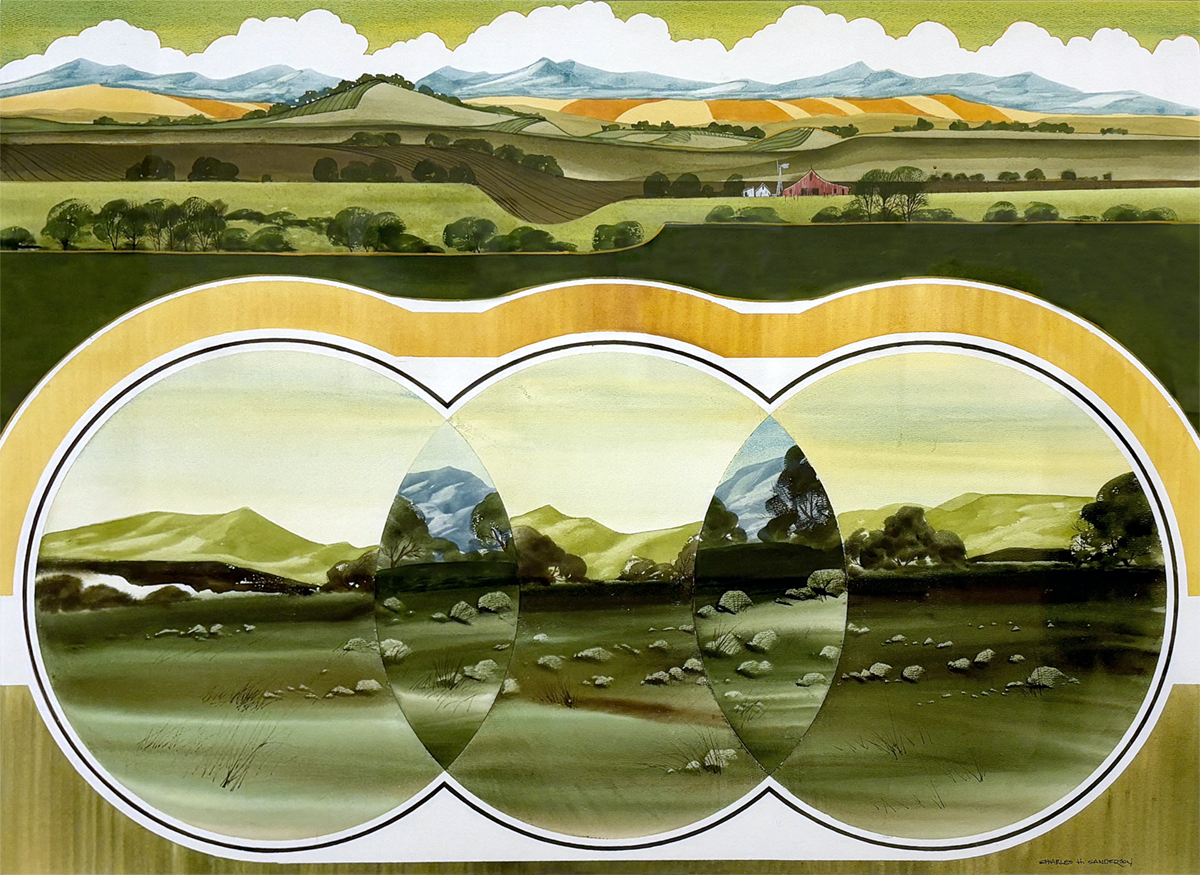
The ideal place to experience the "Charles H. Sanderson Retrospective" is within the bright, buttery walls of the Birger Sandzén Memorial Gallery. On display through October 20, the exhibition is an affectionate journey through the accomplished painter and teacher’s long career. The welcoming, mid-century modern space reflects the retro experimentation that visitors will recognize in Sanderson’s adventurous watercolor, oil, and acrylic paintings.
The exhibition — coordinated by Charla Sanderson and Joel Sanderson — feels like a family reunion. This is par for the course for the Sandersons, all of whom — Charla, Joel, and youngest daughter, Karin Swanson-Sanderson — are professional artists who loaned the gallery works by their father from their personal collections.
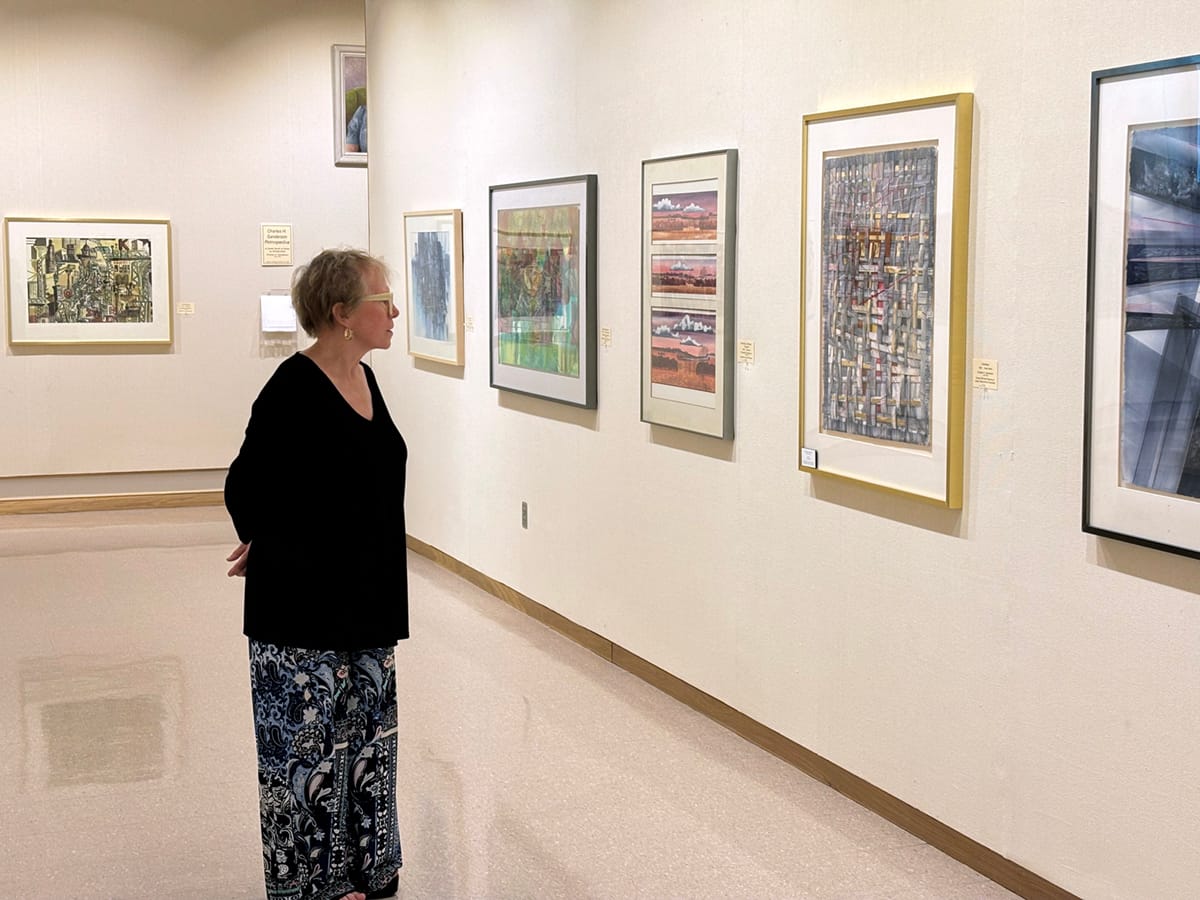
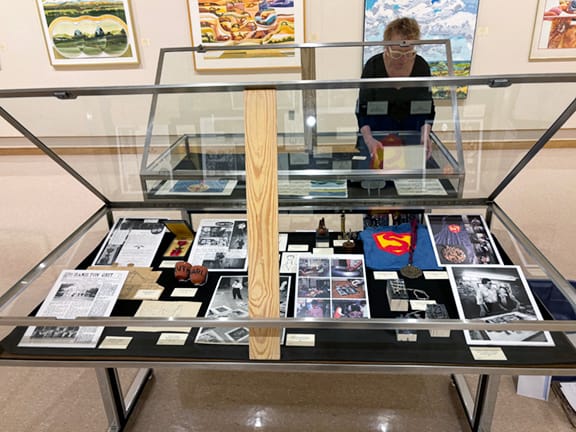
From left: Charla Sanderson views works by her father at the Birger Sandzén Memorial Gallery. At right, she arranges archival objects related to her father. Courtesy photos by Joel Sanderson.
Charles Howard Sanderson (1925-1993) painted and lived in Kansas, where he received a bachelor’s degree in art education from Emporia State and a master’s in fine arts from Fort Hays State. In 1952, he married Ruth Wachholz, who became a devoted partner in his creative endeavors. The artist had a passion for teaching and inspiring a love of art in public school students in Altoona, Lyons, and El Dorado, before relocating to Wichita in 1959 and teaching at Wichita High School South for 26 years.
He also taught at Kansas State, Wichita State, and Friends University as well as the Wichita Art Association/Wichita Center for the Arts and the Wichita Art Museum. He was a member of The Artists Guild of Wichita and was recipient of the Kansas Governors Award in 1988. For more than 35 years, nearly every night after a full day of teaching, Sanderson painted from 7-11 p.m., trying his hand at a wide range of styles and techniques.
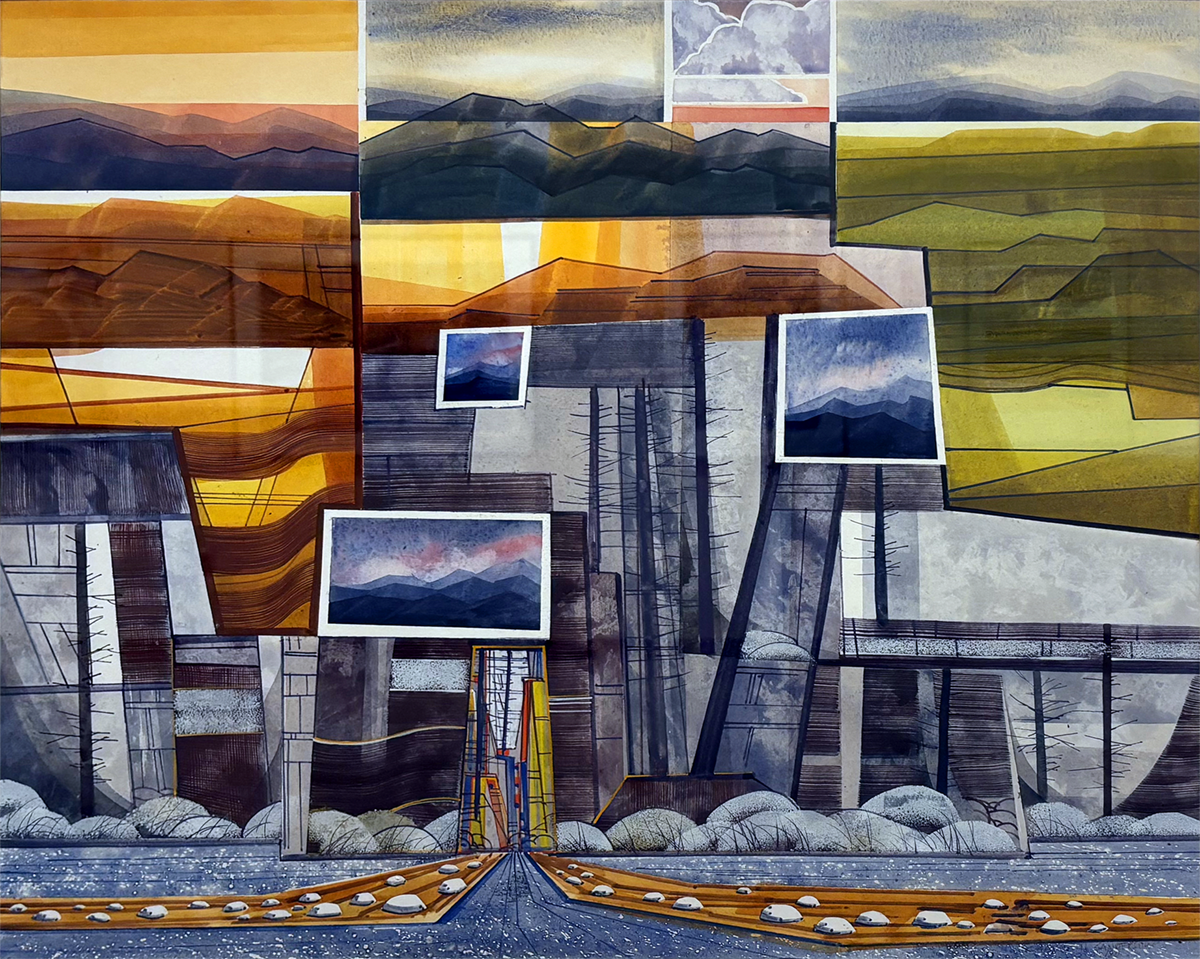
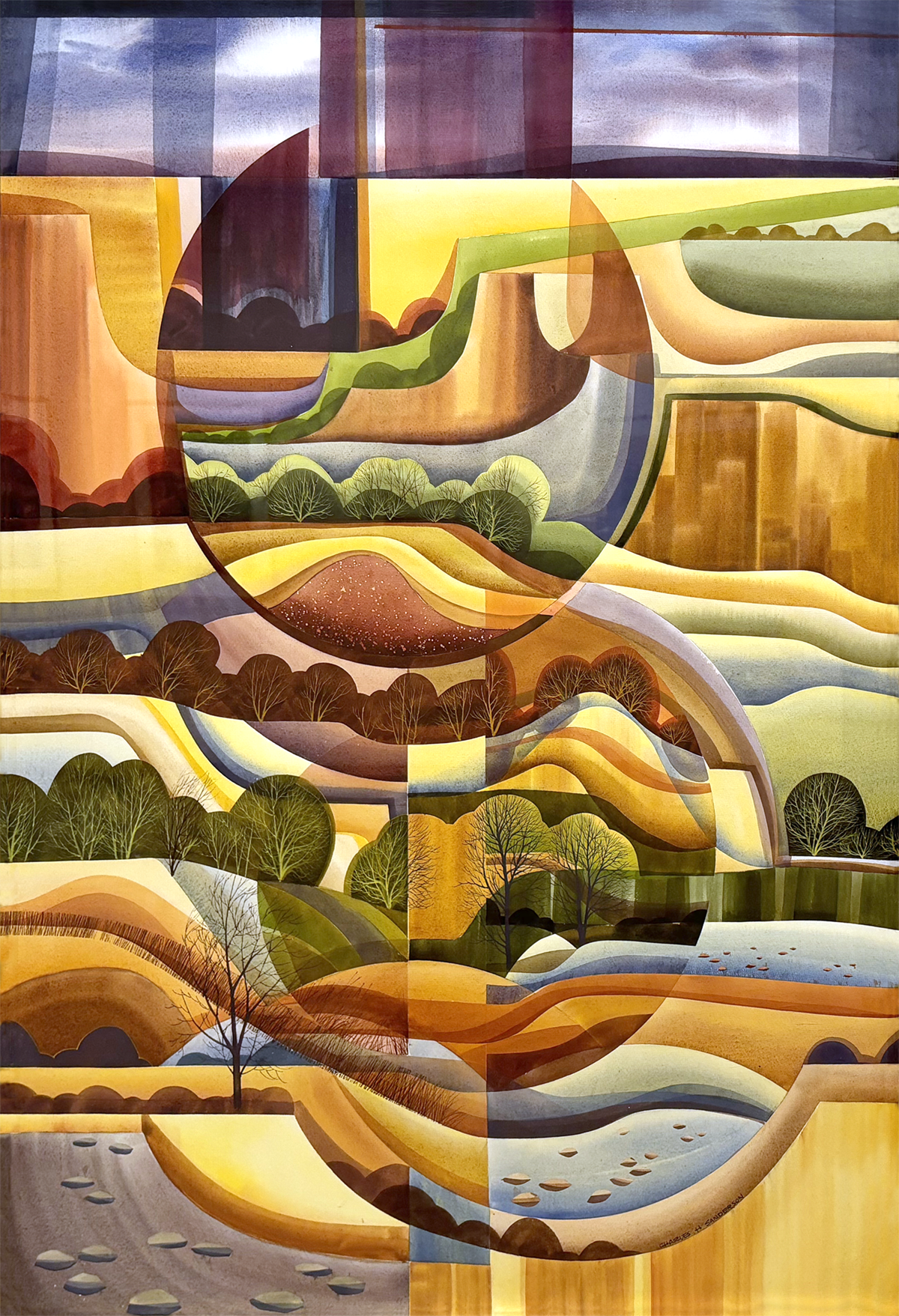
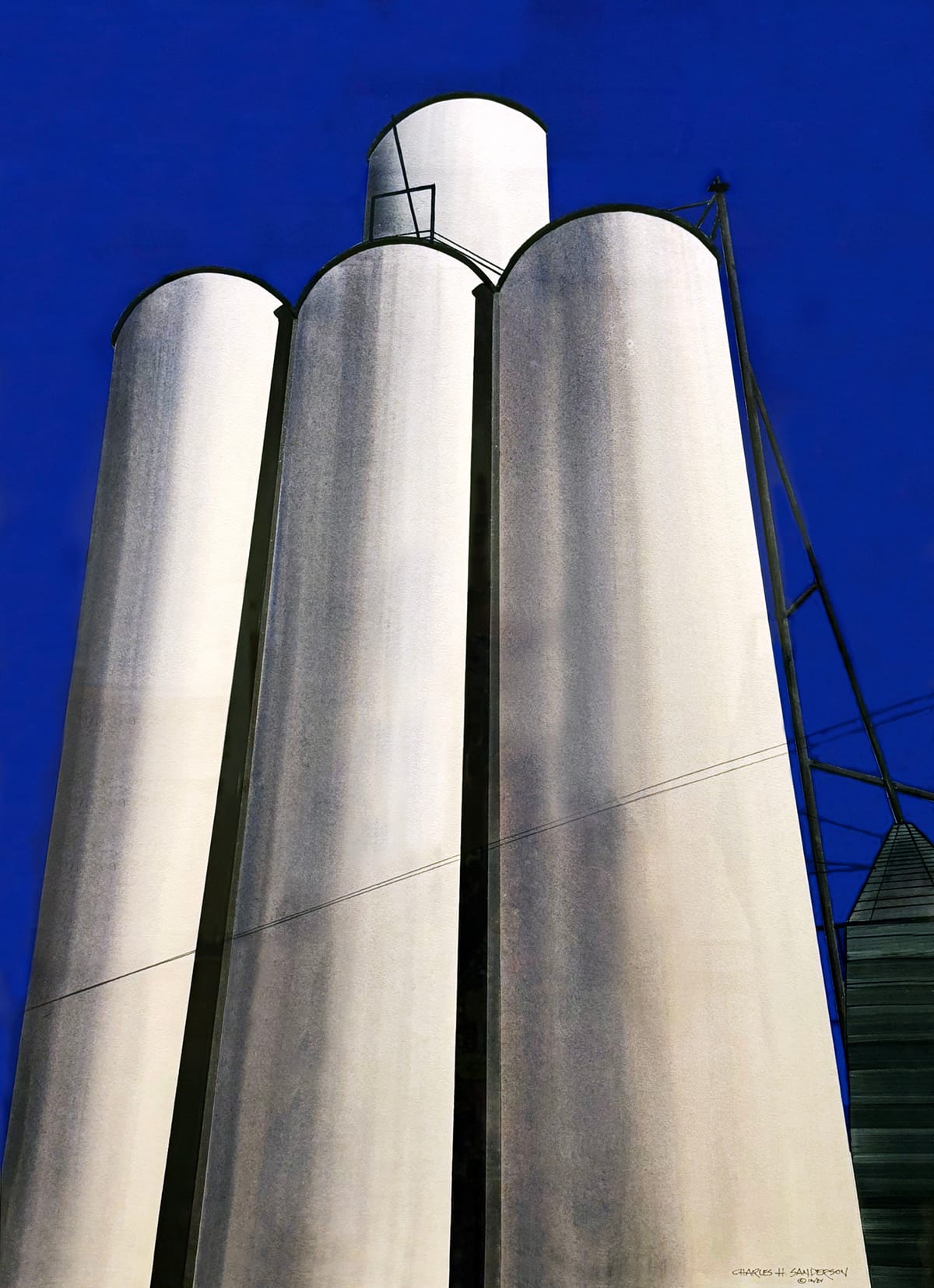
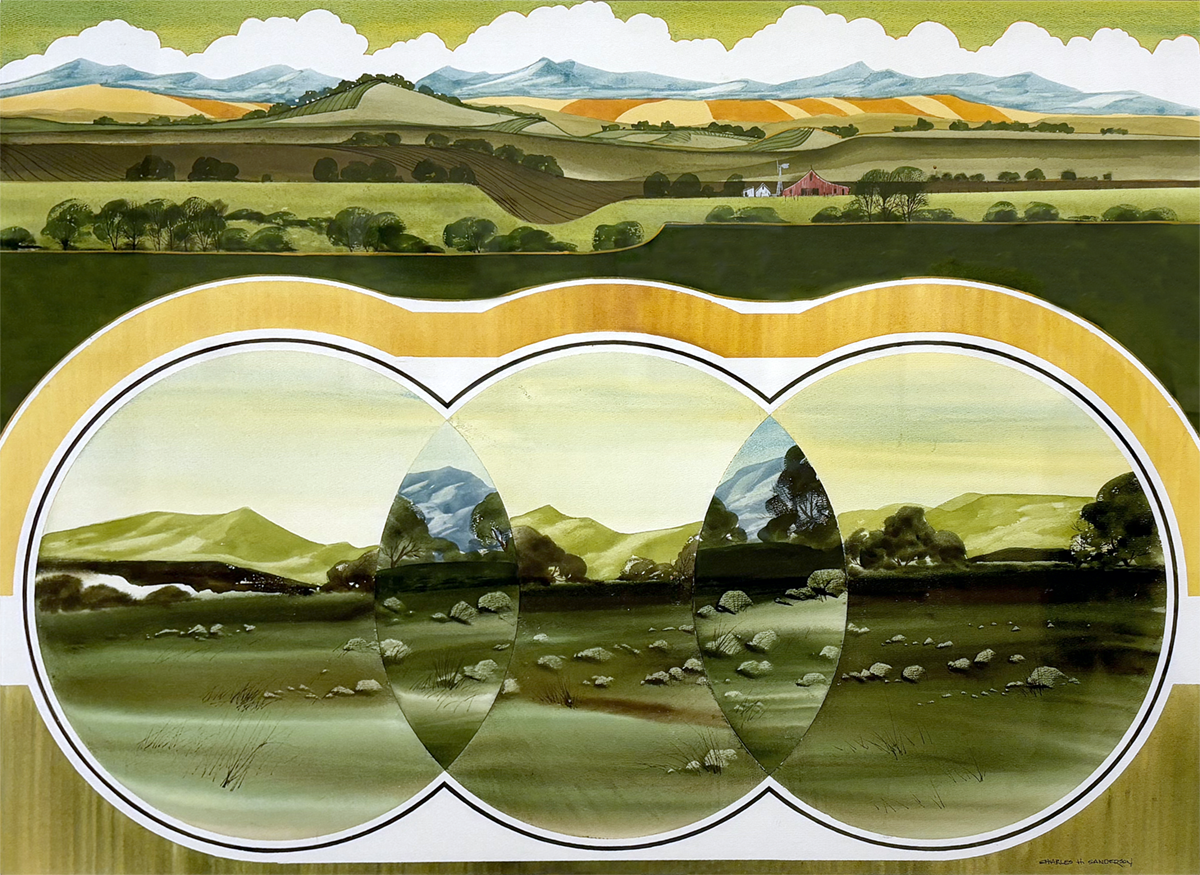
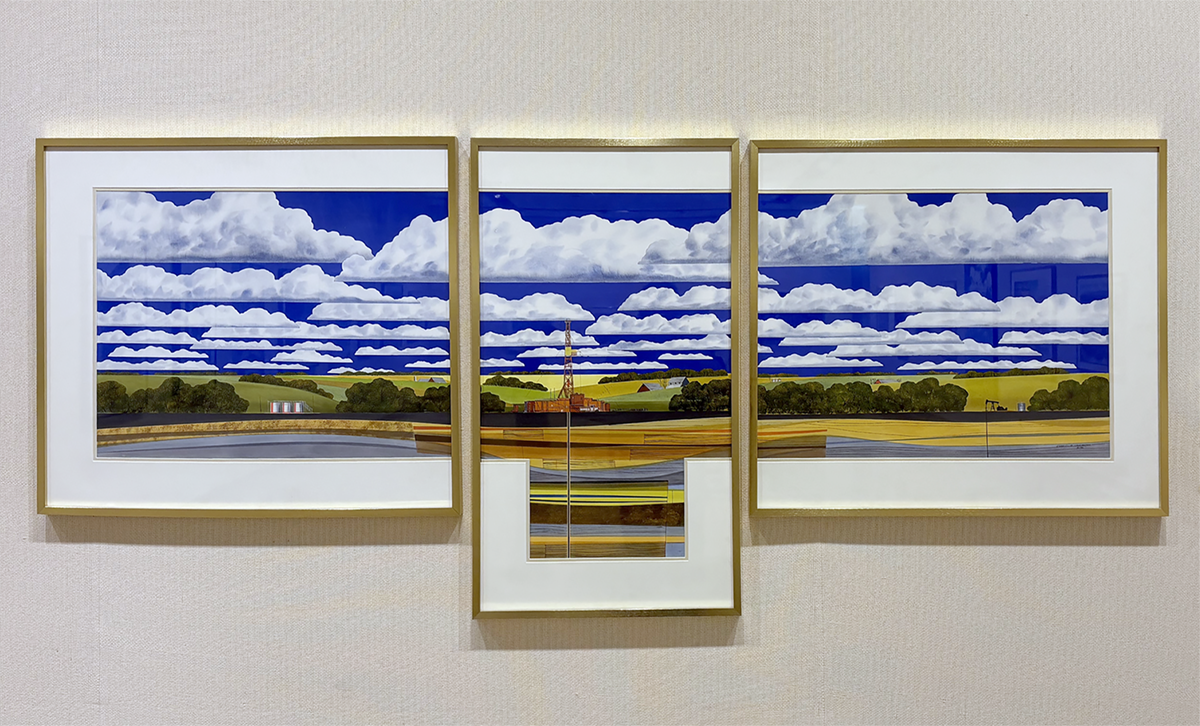
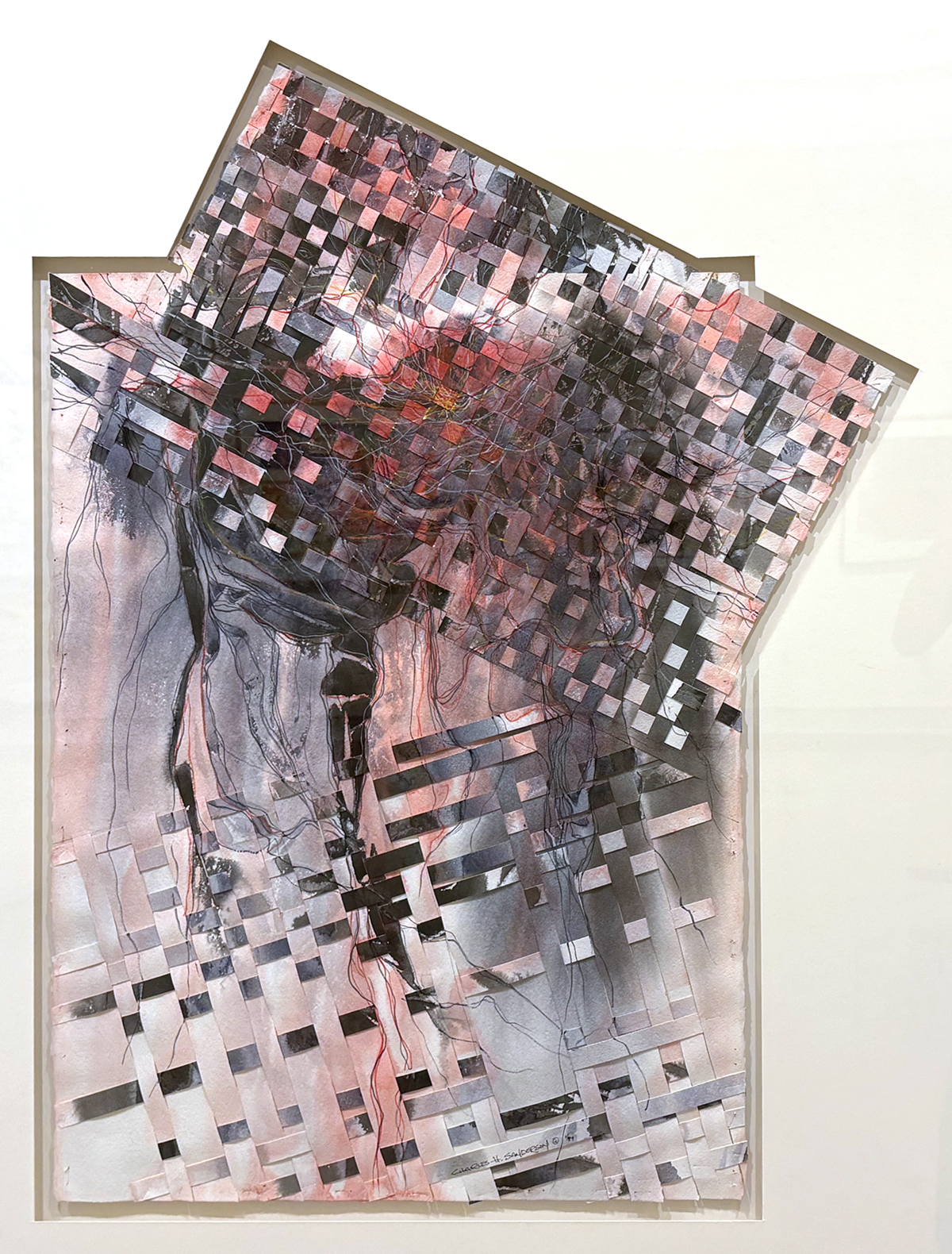
Works by Charles Sanderson, from top left: Foothills Design Squares,” 1980, watercolor on paper, from the collection of Charla Sanderson, courtesy photo by Demolition Kitchen Media; “Fragmentalization,” 1977, watercolor on paper, from the collection of Joel Sanderson and Kristina Hermanson, courtesy photo by Demolition Kitchen Media; “Frontier Heights,” 1984, watercolor on board, from the collection of the Wichita Art Museum, photo by Teri Mott; “Trinocular,” 1975, watercolor on paper, from the collection of Joel Sanderson and Kristina Hermanson, courtesy photo by Demolition Kitchen Media; “Earth Energies Triptych,” 1984, acrylic on watercolor board, from the collection of The Kansas Oil Museum, courtesy photo by Demolition Kitchen Media; “Confusedness,” 1989, watercolor on paper, from the collection of Charla Sanderson; courtesy photo by Demolition Kitchen Media.
A stroll through the show feels like a series of road trips to varied compelling attractions, each telling the story of the painter’s sojourns into different styles and media. This may be intentional. The Sanderson kids spent their summer vacations traveling with their parents when Charles had a break from teaching. Ruth, who was also a teacher, scheduled trips to art fairs so Charles could sell his work and pay for their travels.
“Our summer vacation destinations were set where the good art fairs were taking place,” Charla reminisced. “This took us all over the country in our van and camper. We had a blast as kids. We got to see a lot of the country and each art fair was like going to see family, as we knew many of the other artists making the rounds as well.” No doubt there were ample opportunities for the Sanderson clan to observe the many ways their father’s work sprouted and stretched, shimmered and pulsed as he embraced different techniques and inspirations.
Our free email newsletter is like having a friend who always knows what's happening
Get the scoop on Wichita’s arts & culture scene: events, news, artist opportunities, and more. Free, weekly & worth your while.
No spam. Unsubscribe anytime.
"Retrospective" comprises 28 paintings, spanning from 1954 to 1992. The siblings chose to arrange the paintings in pairs, rather than chronologically, “to better show his ideas and continuous change,” Charla explained. “He was a painter always seeking, always testing, and always experimenting. Each wall has a different focus from realistic to abstract to early experimentation.”
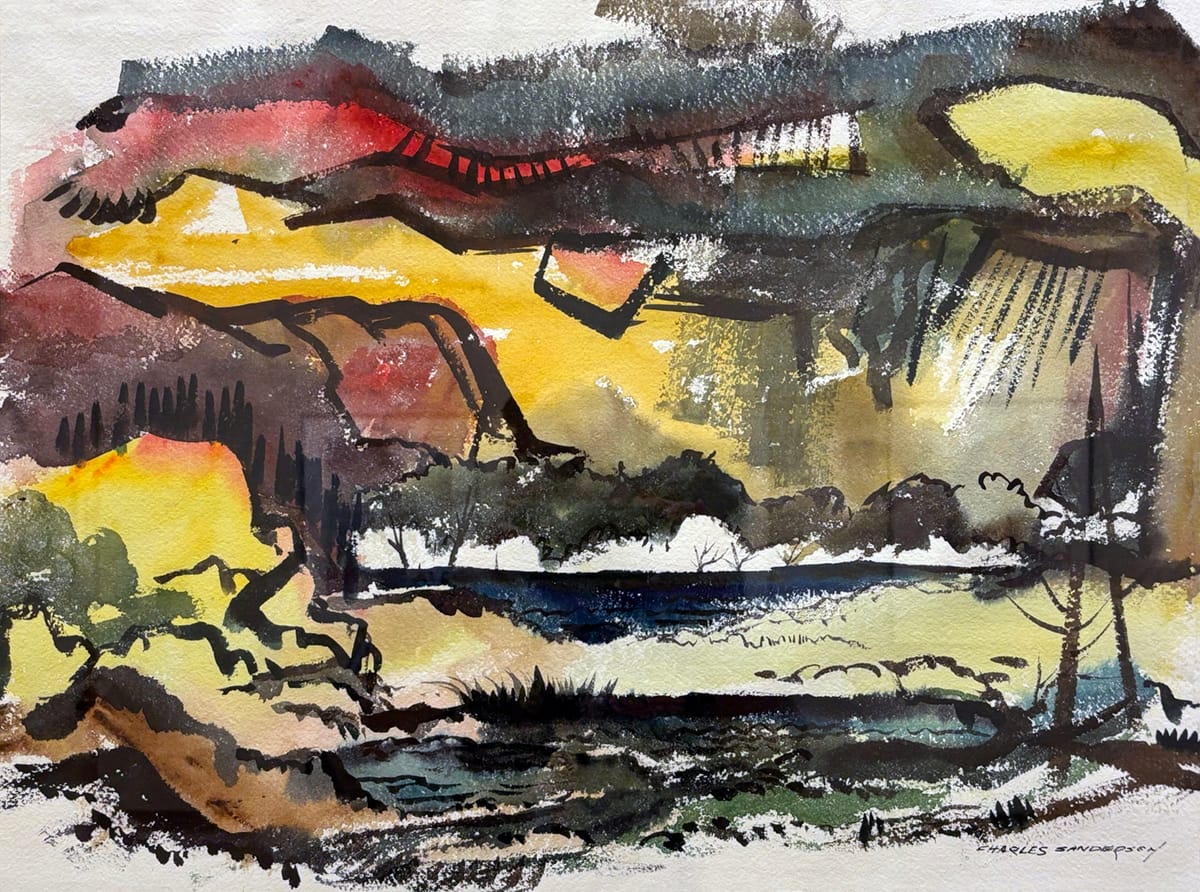
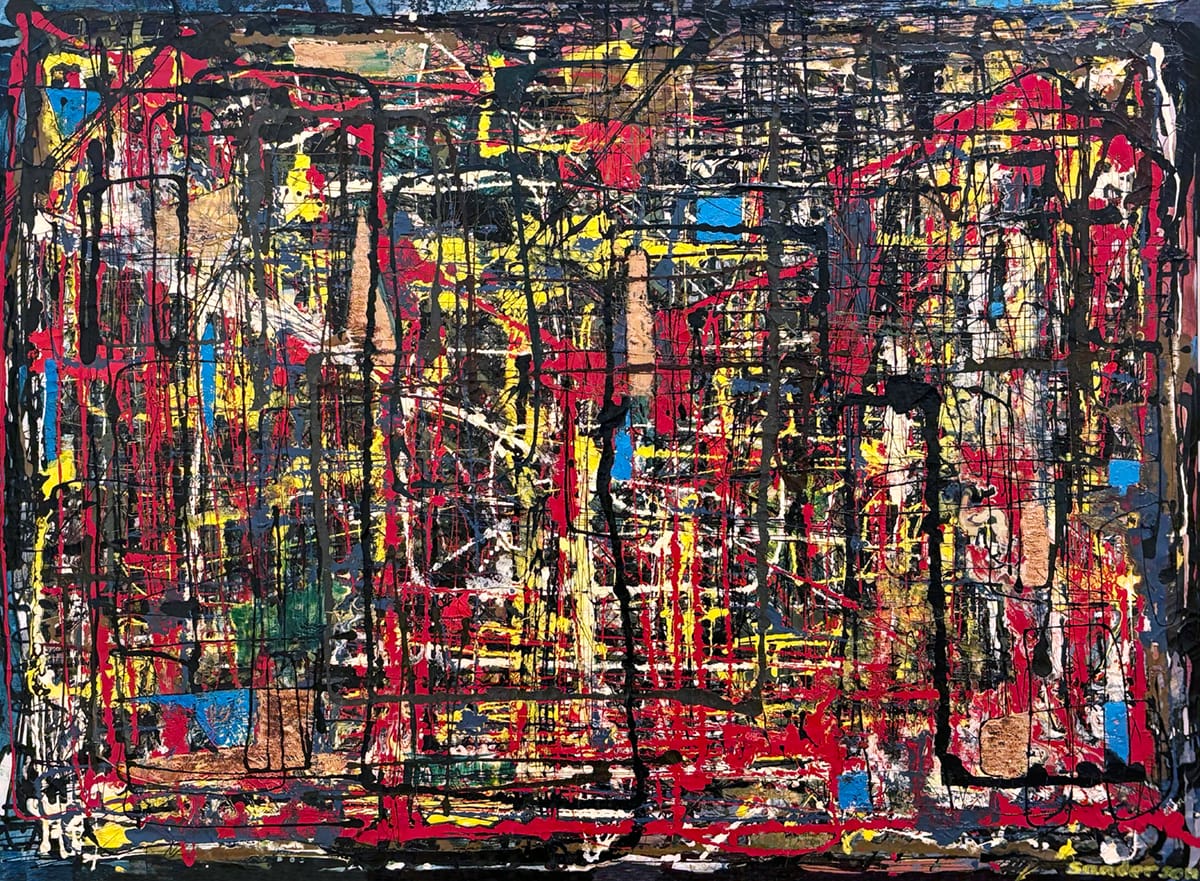
Works by Charles Sanderson, from left: “Mountain Weather,” 1959, watercolor on paper, from the collection of Charla Sanderson; “Impact,” 1954, oil on canvas, from the collection of Joel Sanderson. Photos by Teri Mott for the SHOUT.
"Mountain Weather," an aggressive landscape built of bold yellow, crimson, and phthalo strokes is alive with movement. One can imagine the artist briskly applying the paint with expansive, yet efficient, movements, resulting in a piece that feels both abstract and remarkably lifelike. Boasting dripped oil paint in busy layers that intersperse deep, dark lines with flashing bright hues, "Impact" nods toward the work of Jackson Pollack but is pure Sanderson. Both were painted by the artist in the 1950s.
Many of these pieces have an illustrative quality. It would be easy to picture Sanderson drawing cheeky, metropolitan ads for Madison Avenue circa 1961. "Construction," a watercolor from that era, is chock-full of expertly rendered detail, suggesting a metropolis rapidly expanding thanks to the machinations of an imaginary, Rube Goldberg-like city planner. Almost ten years later, Sanderson produced "Inner Urban," another civic landscape that finds the artist building on smooth, blue swaths of paint with structural details and lines piled atop each other — a city so densely populated that its neighborhoods seem to be melting together.
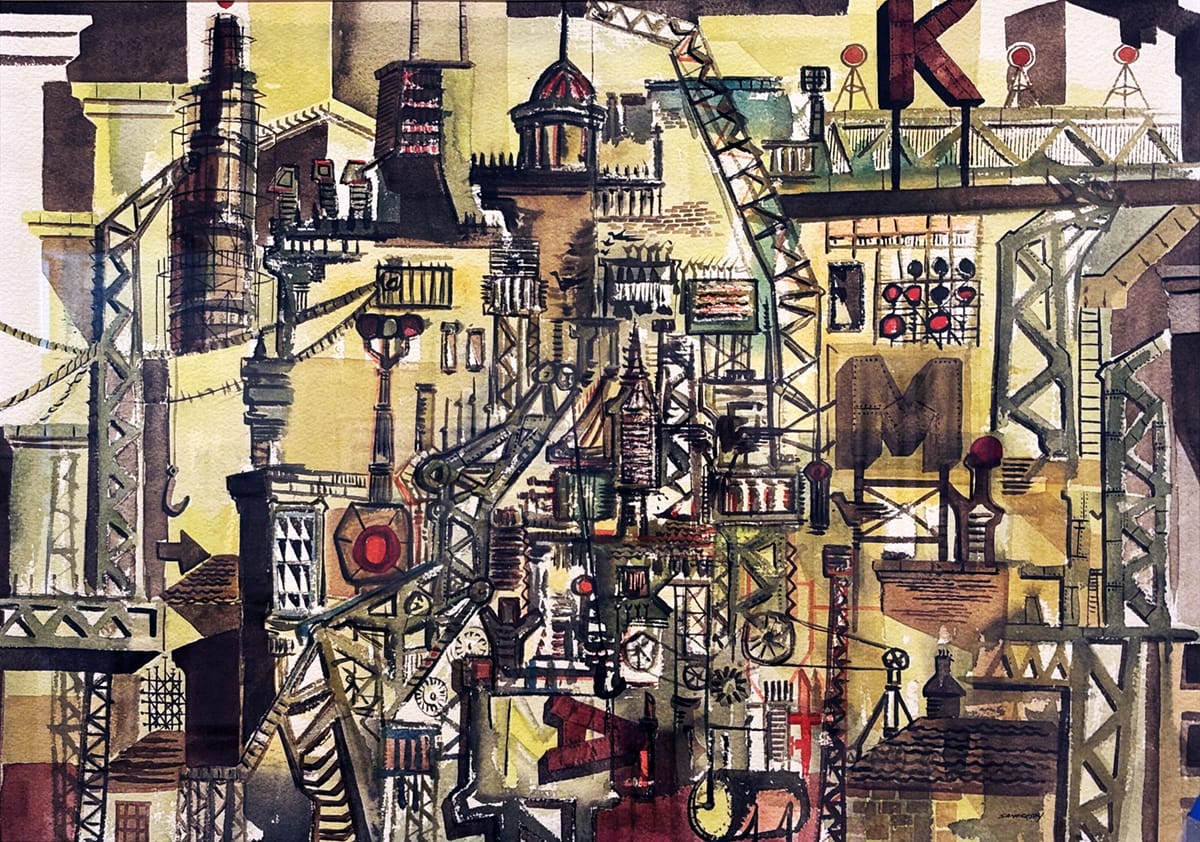
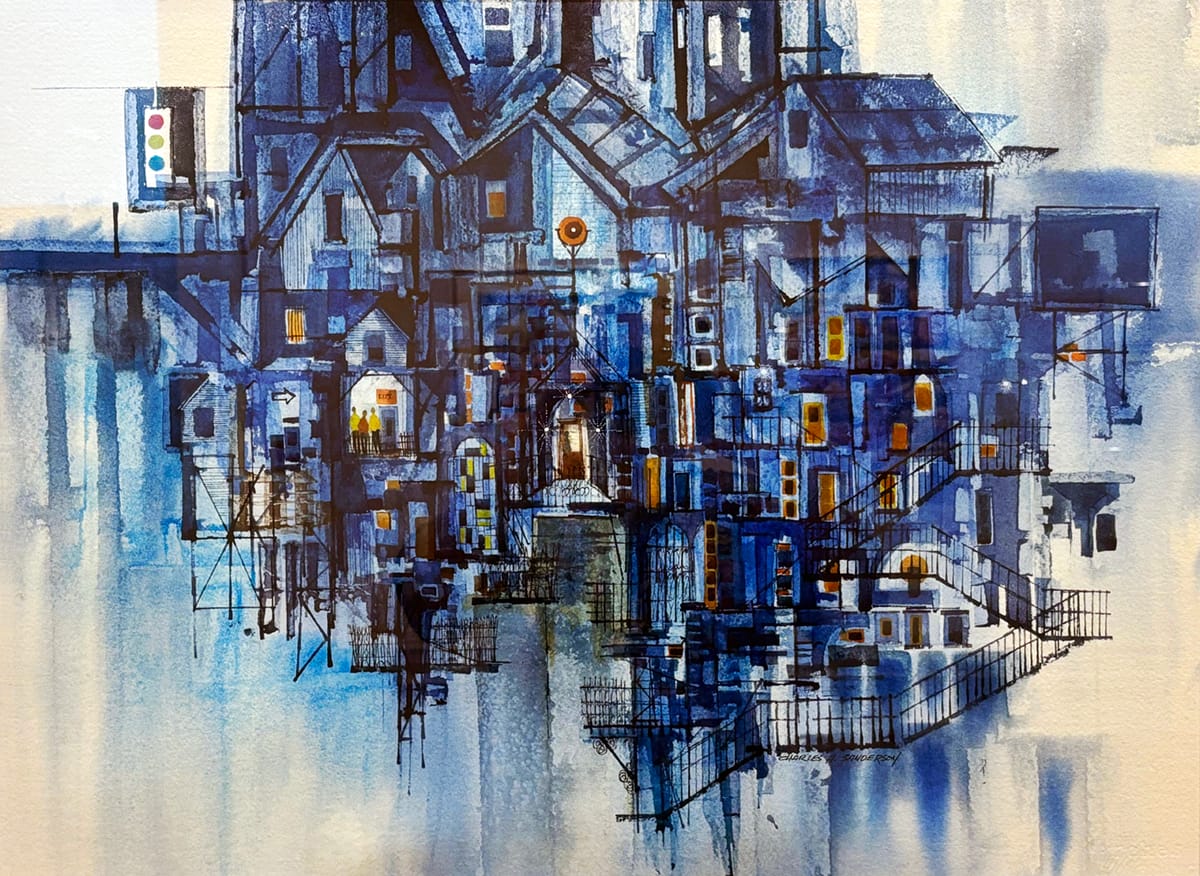
Works by Charles Sanderson, from left: “Construction,” 1961, watercolor on paper, from the collection of Joel Sanderson; “Inner Urban,” 1970, watercolor on paper, from the Emprise Collection. Photos by Teri Mott for the SHOUT.
Landscapes Sanderson painted in the 1970s and 1980s capture an aesthetic that is reminiscent of those eras but are unmistakably the artist’s own. In "From the Prairies to the Mountains," he captures the widely varied geography of the central U.S., rendering it in vivid gold, lush plum, and familiar stretches of blue. We can clearly spot the Flint Hills, the Great Plains, mountains, and rivers executed in his meticulous, yet free, style that gives us the impression that we are driving by these natural wonders.
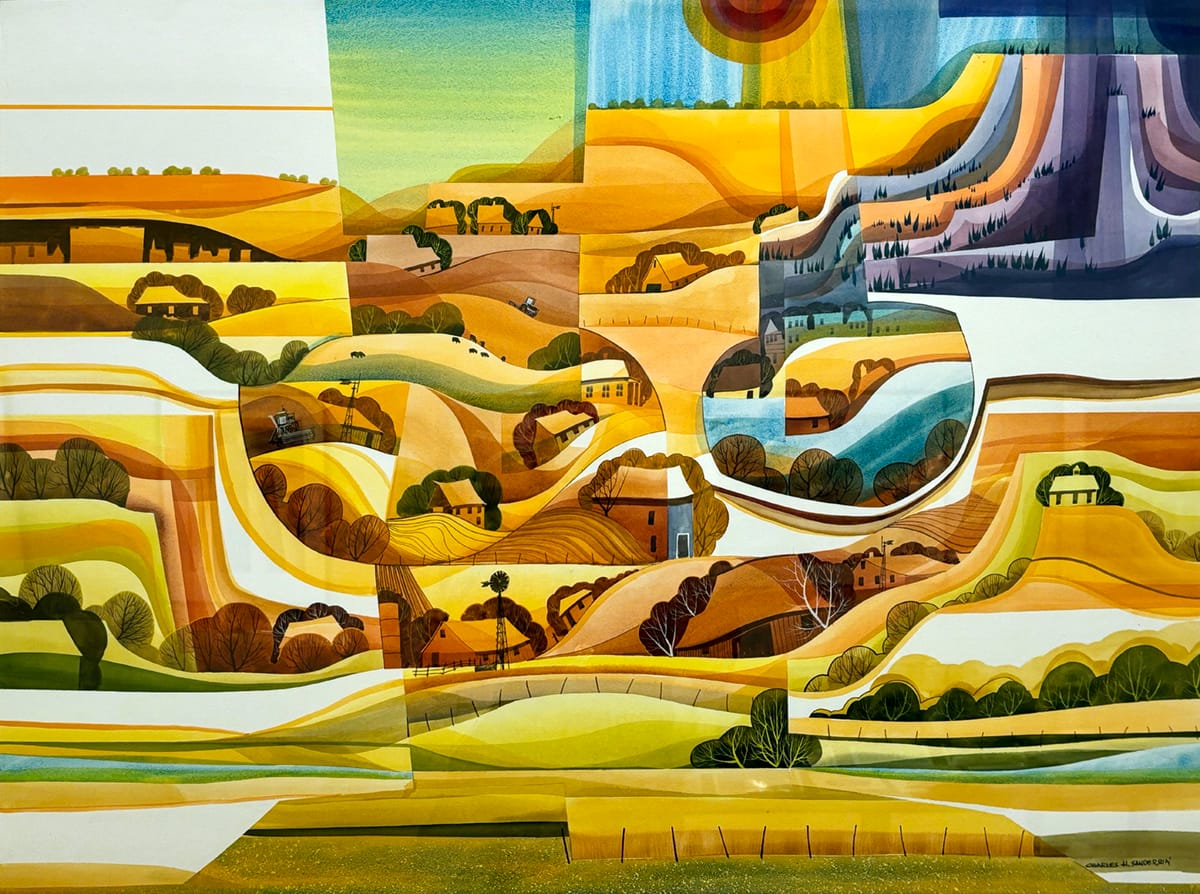
More experimental pieces are featured as well, including "Intagrid," a 1988 work for which the artist painted in vivid abstraction, sliced the painted surface into strips, and wove them together, forming a piece that captures the relentless, graceful movement inherent in so many of his paintings.
At the heart of the exhibition are two glass cases filled with photos, memorabilia, and personal items that belonged to Charles Sanderson. This display adds context and further information about the artist and his passion to create — and to share the gift of creativity with his family, friends, students, and myriad fans.
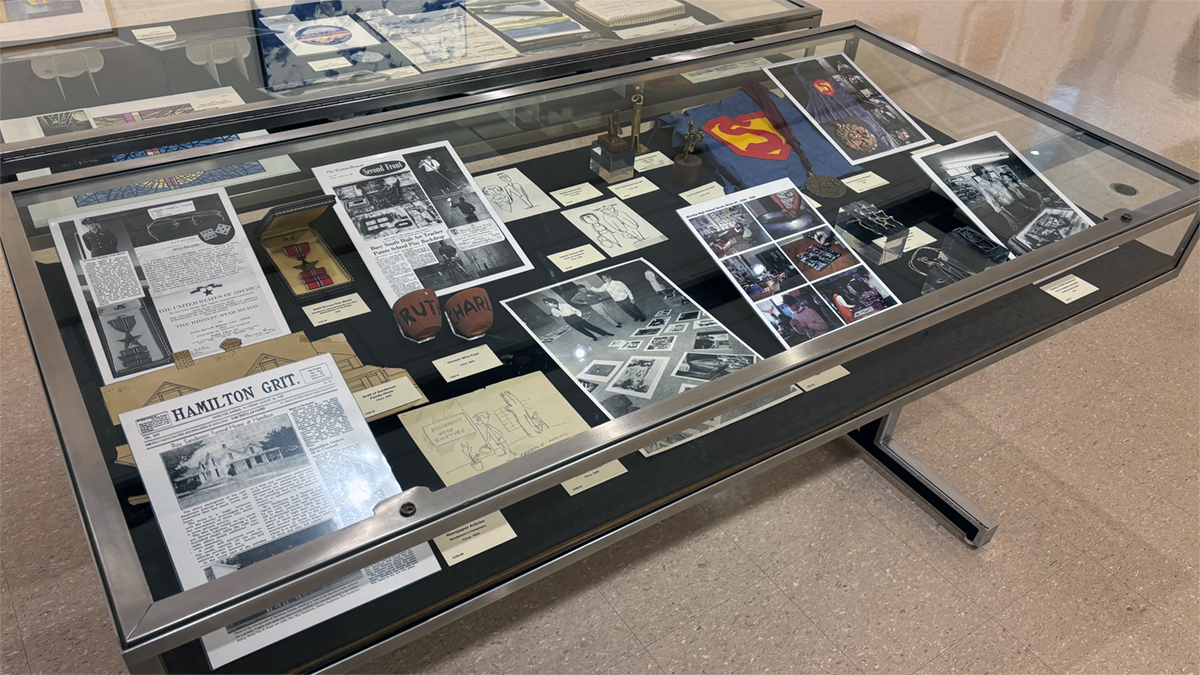
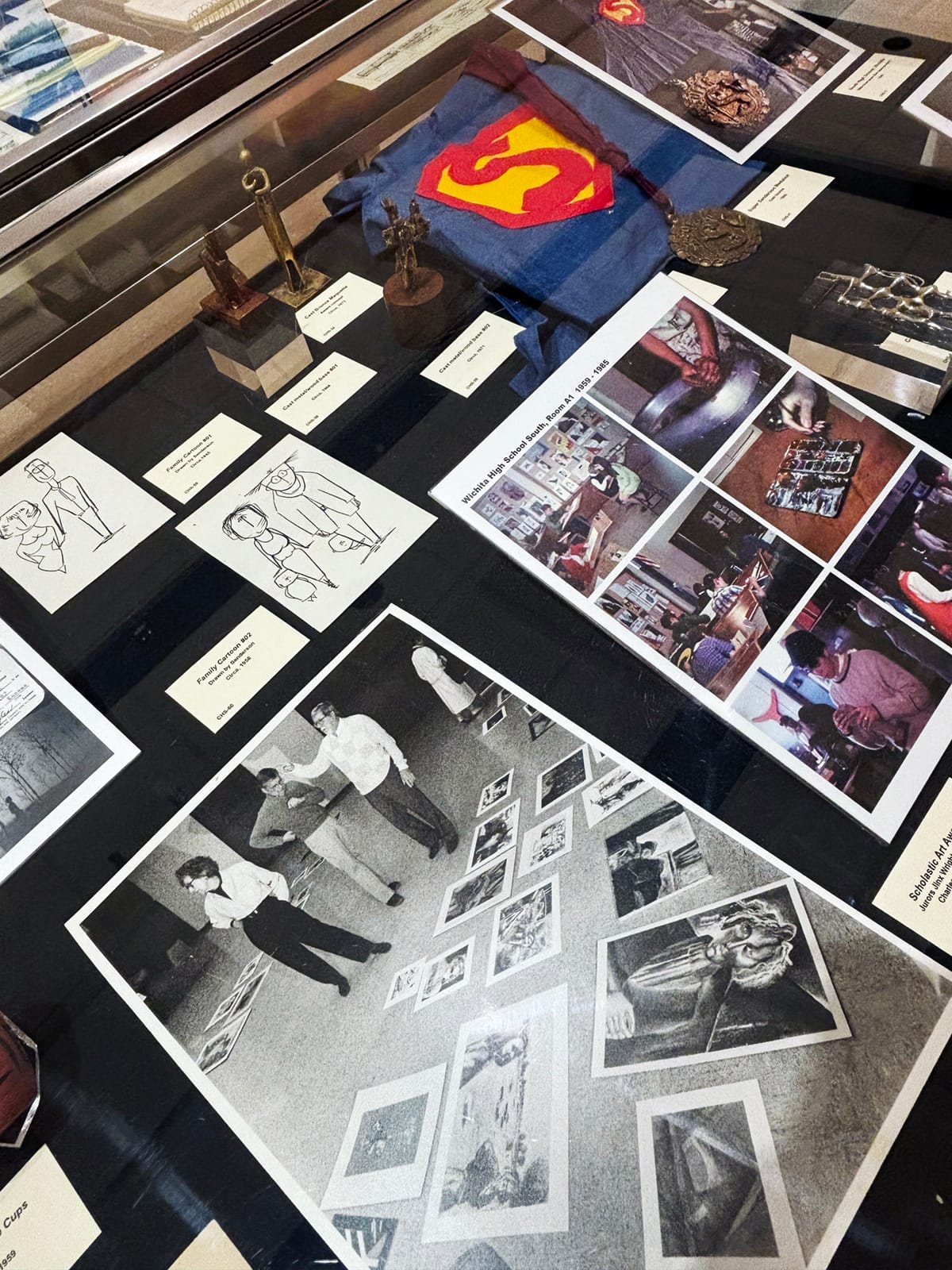
Archival materials about Charles H. Sanderson on display in the "Retrospective" exhibition. Photos by Teri Mott for the SHOUT.
The Details
"Charles H. Sanderson Retrospective"
Through Sunday, October 20 at Birger Sandzén Memorial Gallery, 401 N. 1st St. in Lindsborg, Kansas
Charla Sanderson and Joel Sanderson will present a lecture about their father, the man and the artist, on Sunday, October 13 at 2 p.m. at the Birger Sandzén Memorial Gallery.
Learn more about exhibitions at Birger Sandzén Memorial Gallery.
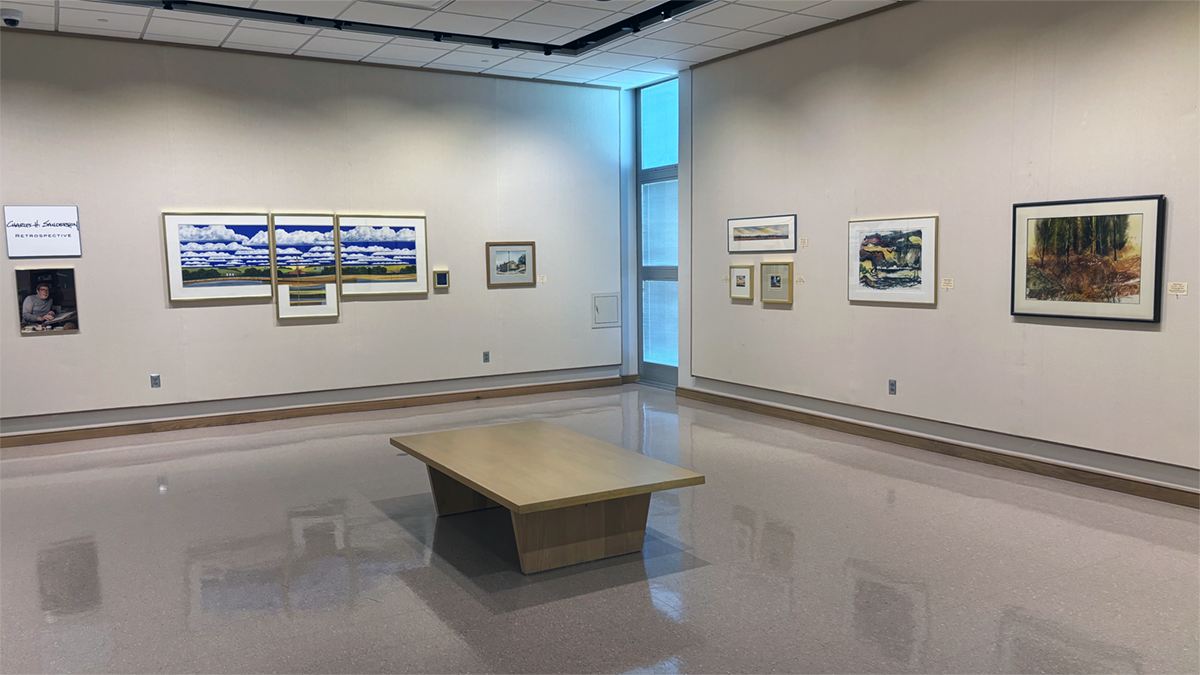
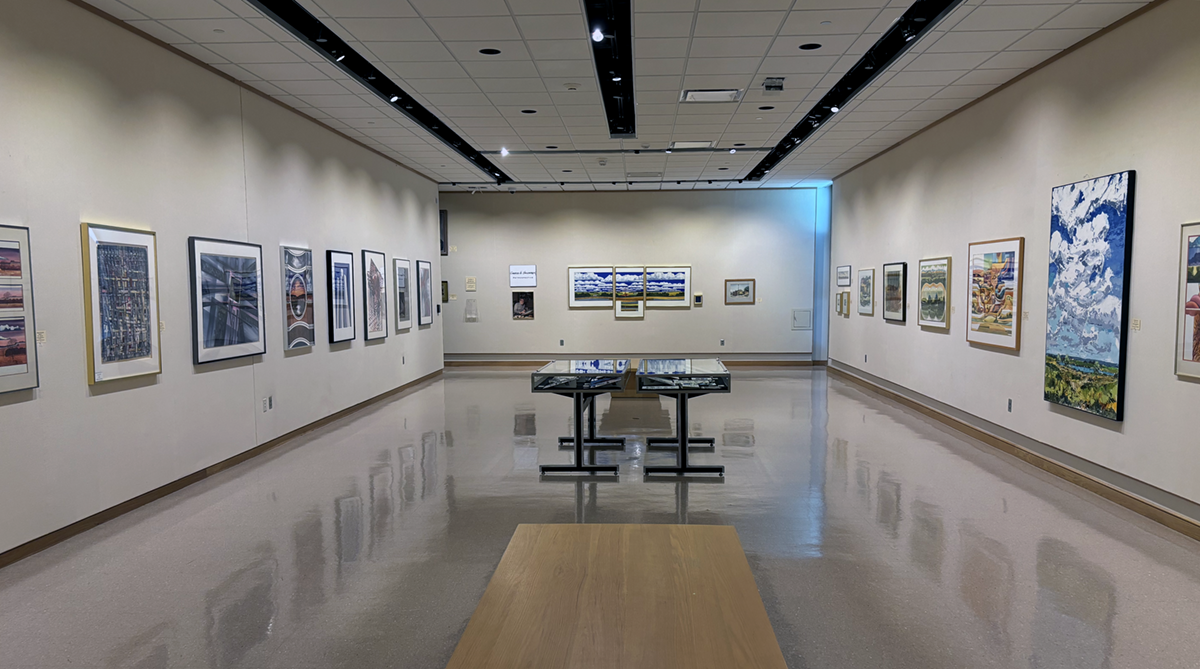
Installation images from "Charles H. Sanderson Retrospective," on view through October 20.
Teri Mott is a writer and actor in Wichita, Kansas, where she covers the arts as a critic and feature writer. She is a co-founder of the SHOUT.
Support Kansas arts writing
The SHOUT is a Wichita-based independent newsroom focused on artists living and working in Kansas. We're partly supported by the generosity of our readers, and every dollar we receive goes directly into the pocket of a contributing writer, editor, or photographer. Click here to support our work with a tax-deductible donation.
❋ Derby man has the kind of voice that turns heads — and chairs
❋ Socializing while sober: how some Wichitans are cultivating alcohol-free communities
❋ As a small creative business closes, the owner mourns
❋ Painting through it: Autumn Noire on 20 years of making art
❋ How a guy from Wichita resurrected 'Dawn of the Dead'
❋ Bygone Friends University museum housed curious collections
More visual arts coverage from the SHOUT
 The SHOUTLori Brack
The SHOUTLori Brack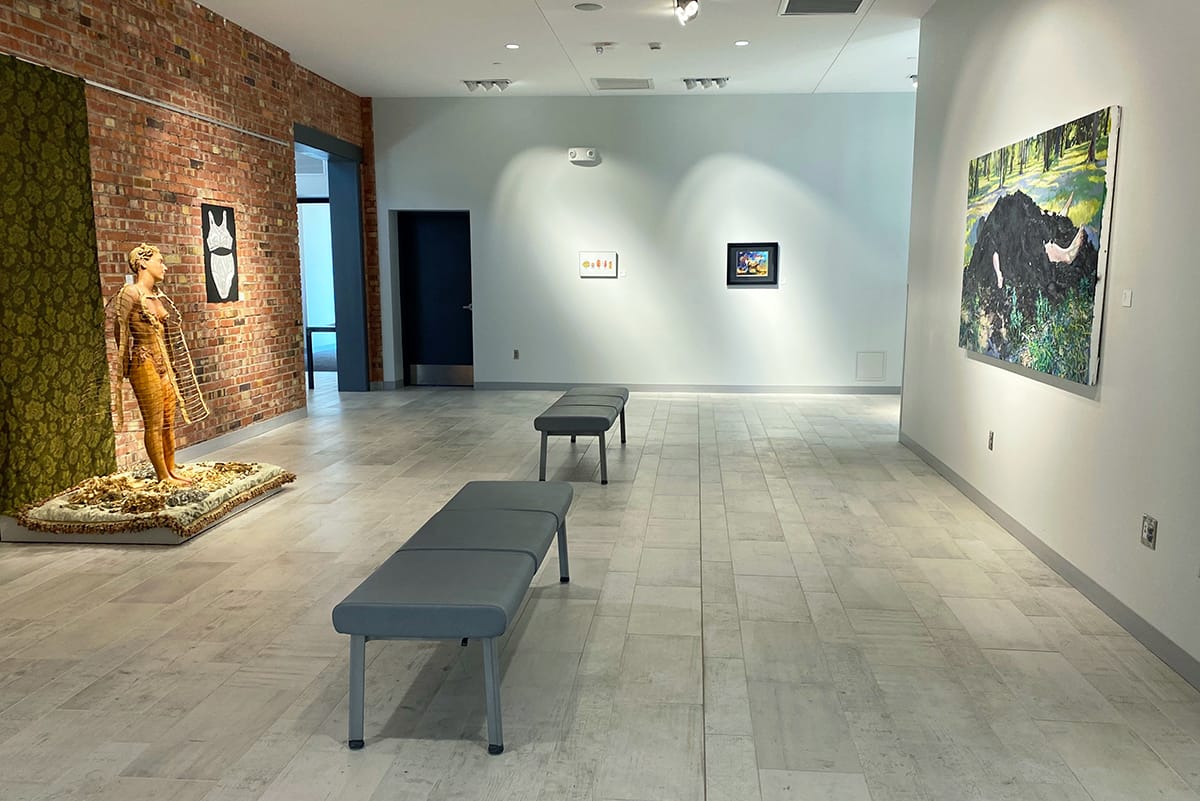
 The SHOUTChloe Lang
The SHOUTChloe Lang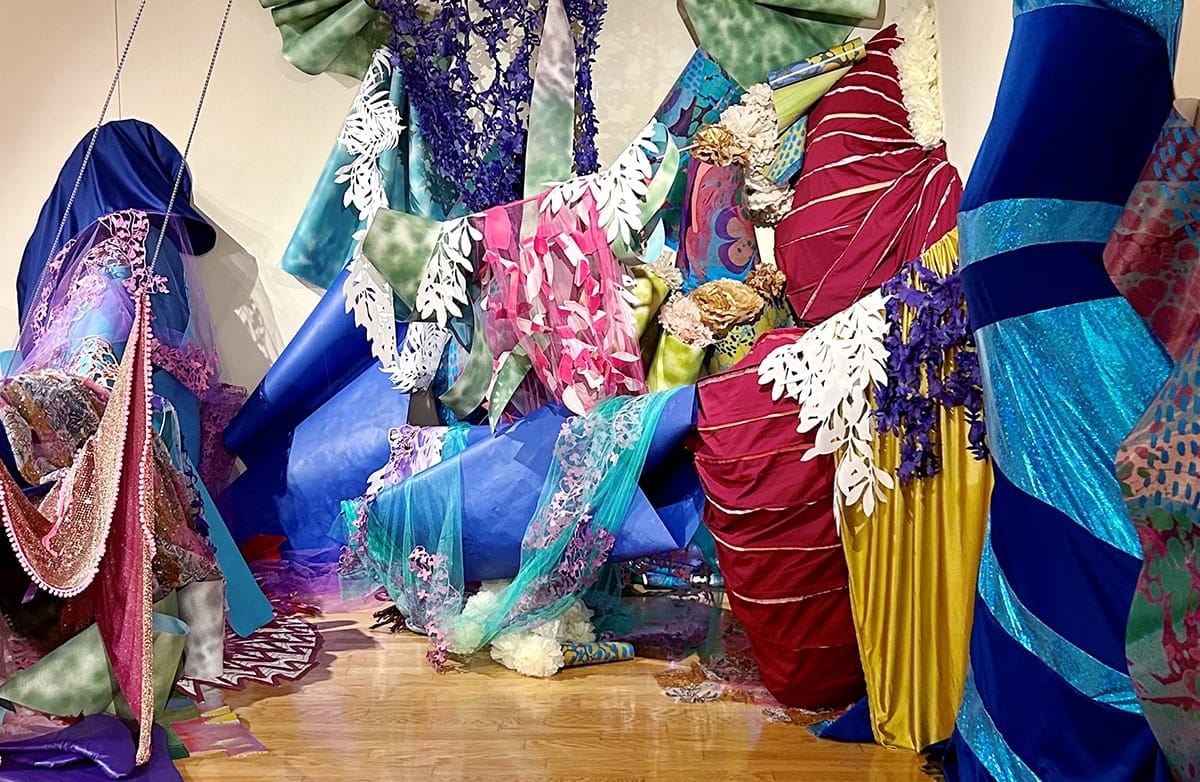
 The SHOUTThe Shout
The SHOUTThe Shout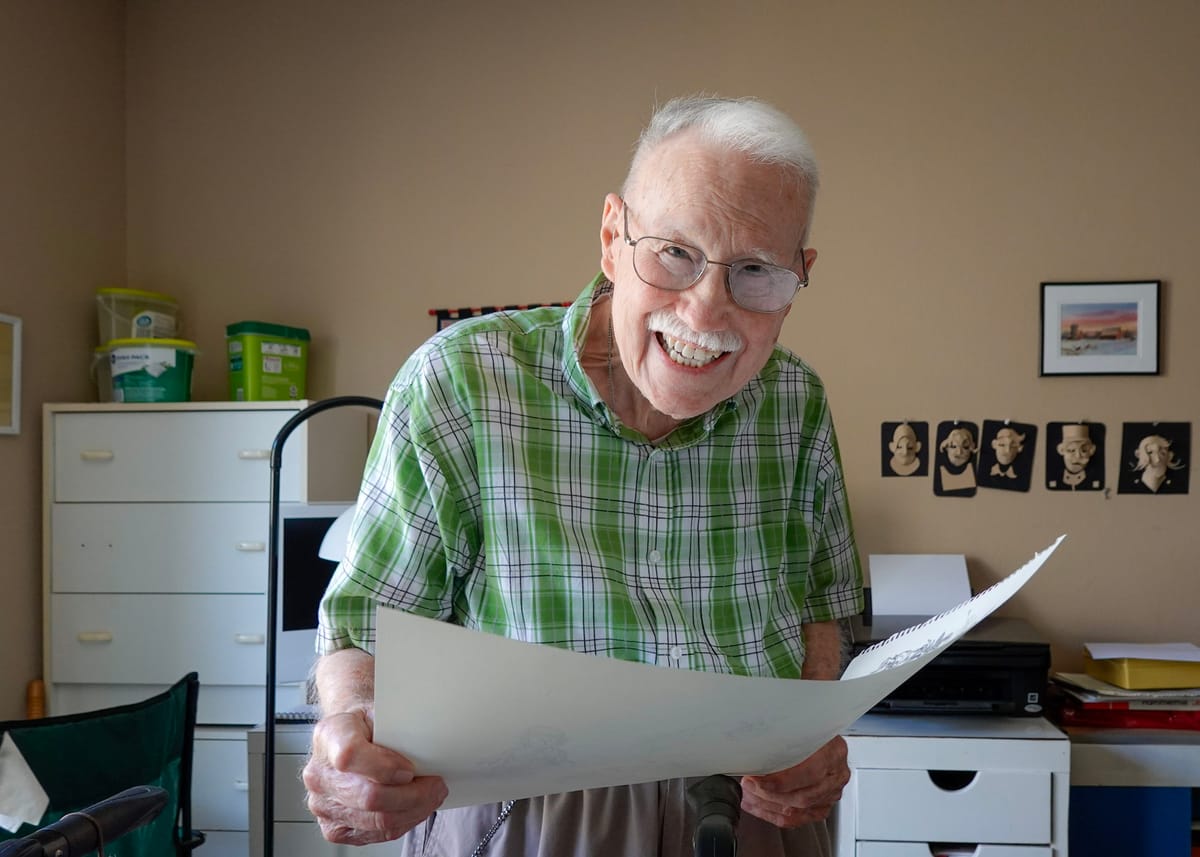
 The SHOUTSamantha Barrett
The SHOUTSamantha Barrett



